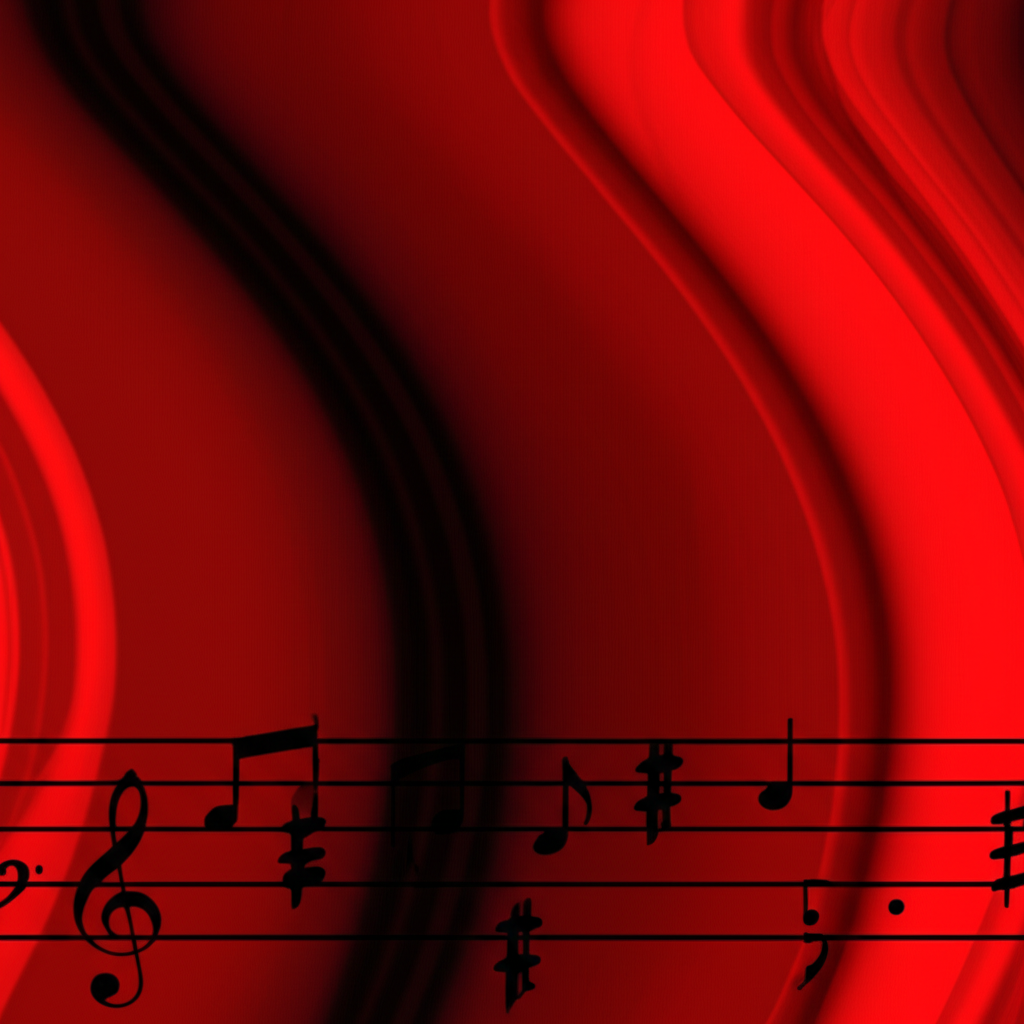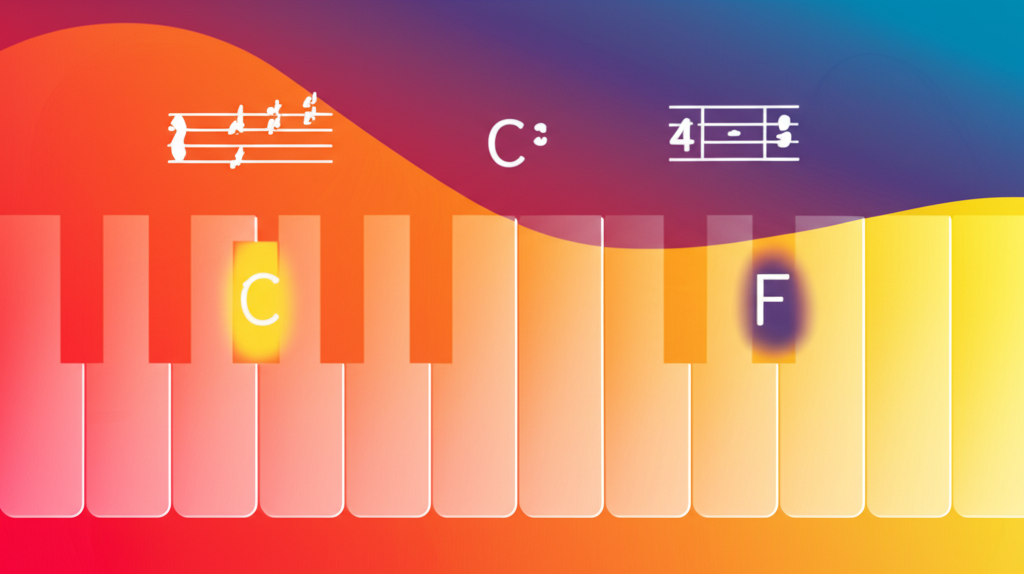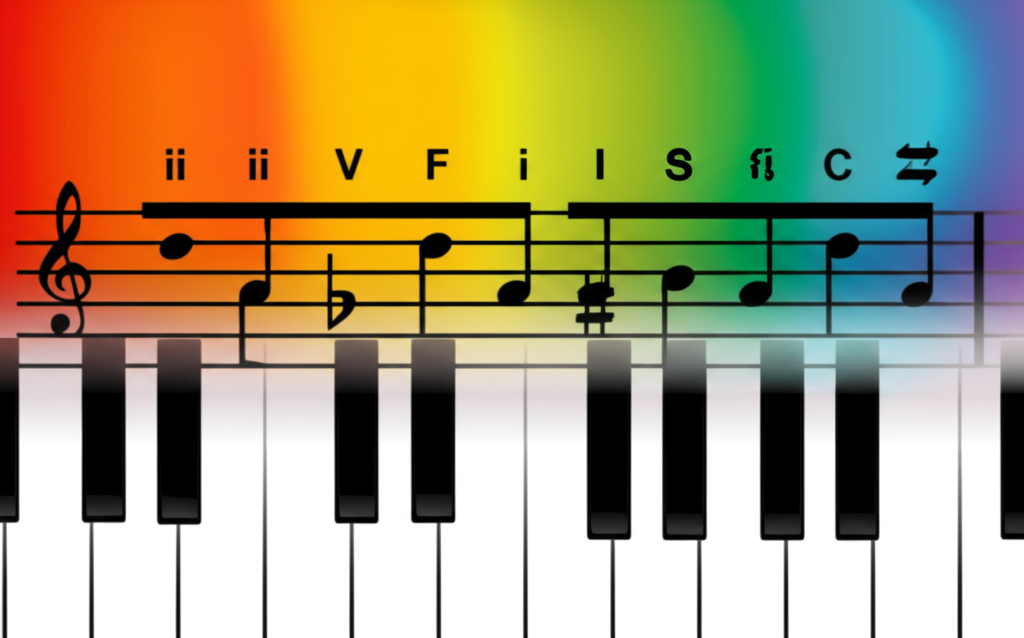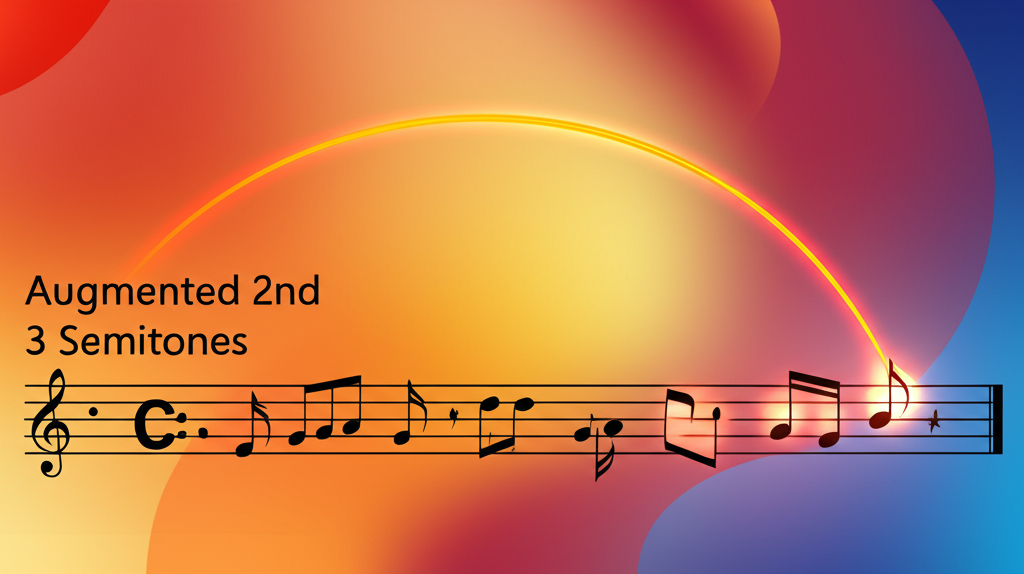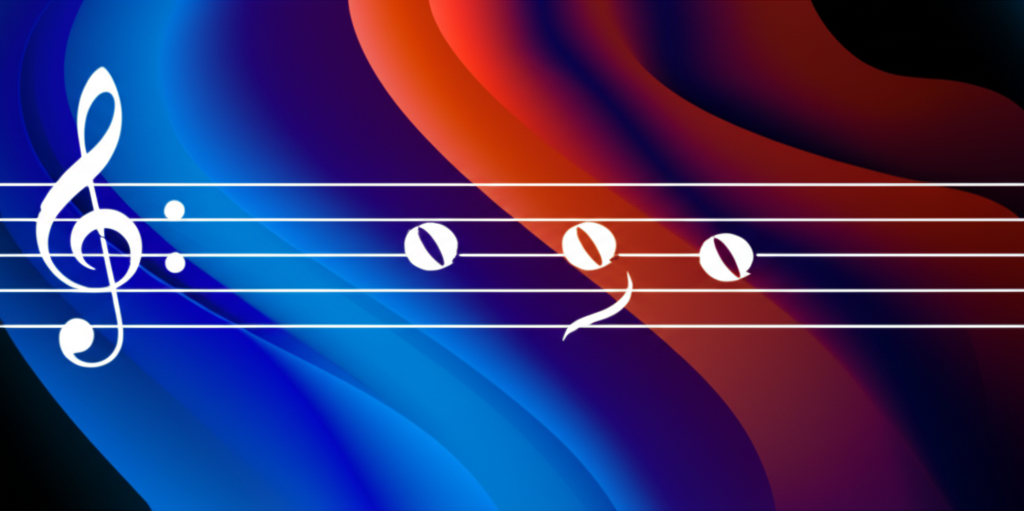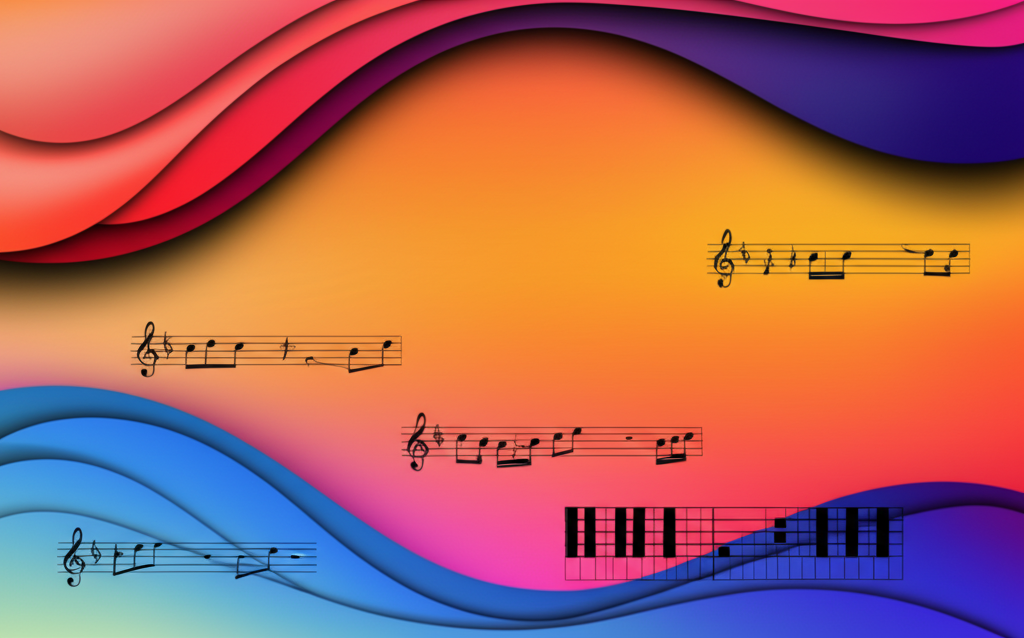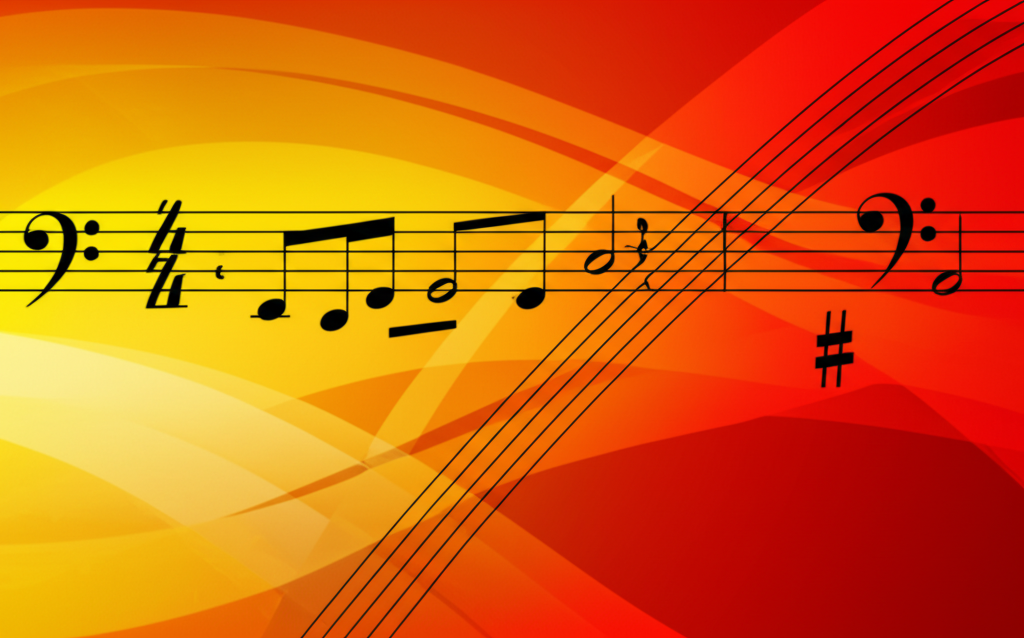
Sus4 Chord: The Classic Suspended Harmony

b4n1
June 14, 2025, 12:53 a.m.
Sus4 Chord: The Classic Suspended Harmony
Summary:
The sus4 chord (suspended fourth) replaces the third of a major chord with the fourth scale degree, creating a distinctive harmony with a strong pull toward resolution. This chord builds tension through the dissonance between the fourth and fifth, making it one of the most recognizable and emotionally powerful tools in both classical and popular music.
Keywords:
Sus4 chord, suspended fourth, suspension, resolution, tension, classical harmony, rock music, voice leading, dissonance, cadential.
Introduction:
The sus4 chord stands as one of music's most fundamental harmonic devices, creating tension through the suspension of the fourth scale degree in place of the third. This replacement generates a powerful dissonance that naturally seeks resolution, making the sus4 chord an essential tool for building musical drama and emotional intensity.
Rooted in classical tradition but embraced across all musical genres, the sus4 chord bridges the gap between traditional voice leading principles and contemporary harmonic practice. Its distinctive sound—neither major nor minor but decisively unstable—has made it a cornerstone of everything from Bach chorales to rock anthems and jazz standards.
Structure and Construction:
A sus4 chord consists of:
- Root: The foundation note
- Fourth: 5 semitones above the root (perfect fourth)
- Fifth: 7 semitones above the root (perfect fifth)
Interval Structure:
Perfect fourth + Major second
Root to fourth: 5 semitones
Fourth to fifth: 2 semitones
Total span: 7 semitones (perfect fifth)
Examples:
C sus4 Chord:
Classical Sus4 Resolution:
Sus4 Chord Progressions:
Harmonic Character:
The sus4 chord creates distinctive harmonic qualities:
- Strong tension: Dissonance between fourth and fifth
- Pull toward resolution: Natural tendency to resolve down
- Ambiguous tonality: Neither major nor minor quality
- Dramatic effect: Creates emotional intensity
- Voice leading tool: Smooth melodic connections
Classical Origins and Theory:
The sus4 chord originated from classical suspension principles:
- Preparation: Fourth appears as consonance in previous chord
- Suspension: Fourth held over while other voices change
- Resolution: Fourth moves down to third
- Voice leading: Stepwise melodic motion
Classical Suspension Example:
Resolution Patterns:
Sus4 chords typically resolve in predictable ways:
- Downward resolution: Fourth moves down to third
- To major: Fourth resolves to major third
- To minor: Fourth resolves to minor third
- Stepwise motion: Smooth voice leading
Popular Music Applications:
Sus4 chords are ubiquitous in popular music:
- Rock music: Creating anthemic, soaring sounds
- Folk music: Natural, open harmonies
- Pop ballads: Emotional climaxes and resolutions
- Country music: Traditional and contemporary styles
- Alternative rock: Atmospheric and textural effects
Famous Musical Examples:
Iconic uses of sus4 chords:
- "Pinball Wizard": The Who's signature sus4 sound
- "Dust in the Wind": Kansas's fingerpicked sus4 progression
- "Let It Be": The Beatles' emotional resolution
- "Crazy Little Thing Called Love": Queen's retro rock sound
- "Free Bird": Lynyrd Skynyrd's epic sus4 progressions
Guitar Techniques:
Sus4 chords are particularly effective on guitar:
- Open chord shapes: Easy fingering with open strings
- Barre chord variations: Moveable sus4 positions
- Hammer-ons and pull-offs: Creating resolution through technique
- Power chord extensions: Adding fourth to power chords
Guitar Sus4 Voicings:
C sus4: x-3-3-0-1-1 or x-3-3-0-1-3
F sus4: 1-1-3-3-1-1 or 1-3-3-3-1-1
G sus4: 3-3-0-0-1-3 or 3-5-5-5-3-3
Piano Approaches:
Effective piano techniques for sus4 chords:
- Block chords: Full sus4 harmonies
- Broken patterns: Arpeggiated sus4 textures
- Resolution studies: Practice suspension patterns
- Pedal techniques: Sustaining harmonic color
Jazz Applications:
Sus4 chords in jazz contexts:
- 11th chords: Sus4 as part of extended harmonies
- Modal harmony: Sus4 chords in modal contexts
- Quartal harmony: Chords built from fourths
- Contemporary jazz: Modern harmonic textures
Extended Sus4 Harmonies:
Sus4 chords can be extended for richer colors:
- 7sus4: Adding seventh for jazz color
- 9sus4: Including ninth for contemporary sound
- 11sus4: Natural eleventh extensions
- 13sus4: Full extended sus4 harmonies
Extended Sus4 Chords:
Cadential Applications:
Sus4 chords in cadential contexts:
- Cadential 6/4: I6/4 functioning as dominant preparation
- Plagal motion: IV to I with sus4 color
- Deceptive resolution: Sus4 resolving to unexpected harmony
- Half cadence: Ending on sus4 for open feeling
Modal Relationships:
Sus4 chords work naturally in modal contexts:
- Mixolydian mode: Natural sus4 harmonies
- Dorian mode: Contemporary modal sounds
- Lydian mode: Raised fourth implications
- Pentatonic scales: Natural melodic compatibility
Compositional Techniques:
Effective ways to use sus4 chords:
- Building tension: Creating harmonic climax
- Smooth voice leading: Connecting distant harmonies
- Color harmony: Adding sophistication to progressions
- Rhythmic emphasis: Placing sus4 on strong beats
- Melodic tool: Creating memorable melodic lines
Performance Considerations:
Timing and Resolution:
Sus4 chord timing affects musical impact:
- Quick resolution for passing effect
- Sustained sus4 for building tension
- Delayed resolution for maximum impact
Dynamic Control:
Sus4 chords respond to dynamic variation:
- Crescendo through suspension builds drama
- Soft sus4 creates gentle color
- Forte sus4 for climactic moments
Inversion Possibilities:
Sus4 chords in different inversions:
- Root position: Strongest suspension effect
- First inversion: Fourth in bass creates different color
- Second inversion: Fifth in bass, often cadential function
Sus4 Inversions:
Historical Development:
The evolution of sus4 usage:
- Baroque era: Strict suspension rules
- Classical period: Refined suspension practice
- Romantic era: More freedom in resolution
- Jazz age: Extended sus4 harmonies
- Rock era: Sus4 as standalone harmony
Psychological Effects:
Sus4 chords create specific emotional responses:
- Anticipation: Creates expectation of resolution
- Yearning: Emotional pull toward stability
- Drama: Heightens musical intensity
- Spaciousness: Open, airy quality
- Timelessness: Floating, unresolved feeling
Common Progressions:
Typical sus4 chord progressions:
- I - Isus4 - I: Simple suspension and resolution
- Vsus4 - V - I: Dominant preparation with suspension
- IVsus4 - IV - I: Plagal motion with color
- vi - IVsus4 - I: Contemporary pop progression
Ear Training and Recognition:
Developing sus4 chord recognition:
- Quality identification: Distinguish from major/minor triads
- Resolution practice: Hear and predict resolutions
- Context training: Identify in various musical styles
- Singing practice: Internalize the sus4 sound
Common Mistakes:
- Over-resolution: Always resolving sus4 chords
- Poor timing: Inappropriate placement of suspensions
- Voice leading errors: Parallel motion problems
- Style mismatches: Using sus4 inappropriately for genre
Advanced Techniques:
Sophisticated sus4 applications:
- Chain suspensions: Multiple consecutive sus4 chords
- Cross-relations: Sus4 against resolved harmony
- Metric displacement: Sus4 on unexpected beats
- Enharmonic resolution: Unexpected resolution directions
Practice Exercises:
For Guitarists:
Master sus4 chord shapes and practice smooth transitions to major/minor chords.
For Pianists:
Practice classical suspension patterns and contemporary sus4 progressions.
For Composers:
Experiment with sus4 placement and resolution in different musical contexts.
Fun Facts:
- The term "suspension" comes from the Latin "suspendere," meaning "to hang."
- Sus4 chords are sometimes called "add11(no3)" in jazz terminology.
- Celtic music naturally features many sus4-type harmonies.
- The sus4 chord is the inversion of the sus2 chord at the octave.
- Many national anthems feature prominent sus4 chords for emotional impact.
Style Applications:
Classical Music:
Strict preparation and resolution following voice leading rules.
Rock Music:
Sus4 as independent harmony, often without traditional resolution.
Jazz Music:
Extended sus4 chords as part of sophisticated harmonic progressions.
Conclusions:
The sus4 chord represents one of music's most powerful and versatile harmonic tools, bridging classical tradition with contemporary practice. Its ability to create tension, drive harmonic motion, and generate emotional intensity makes it indispensable across all musical genres.
Understanding the sus4 chord opens doors to sophisticated voice leading, dramatic harmonic effects, and expressive musical possibilities. Whether used in its traditional suspended form or as a standalone contemporary harmony, the sus4 chord provides composers and performers with a tool for creating memorable and emotionally compelling musical moments.
Mastering sus4 chords enhances harmonic vocabulary, improves voice leading skills, and develops sensitivity to the delicate balance between tension and resolution that drives much of Western music. The sus4 chord remains a cornerstone of harmonic practice, connecting centuries of musical tradition with modern expression.
